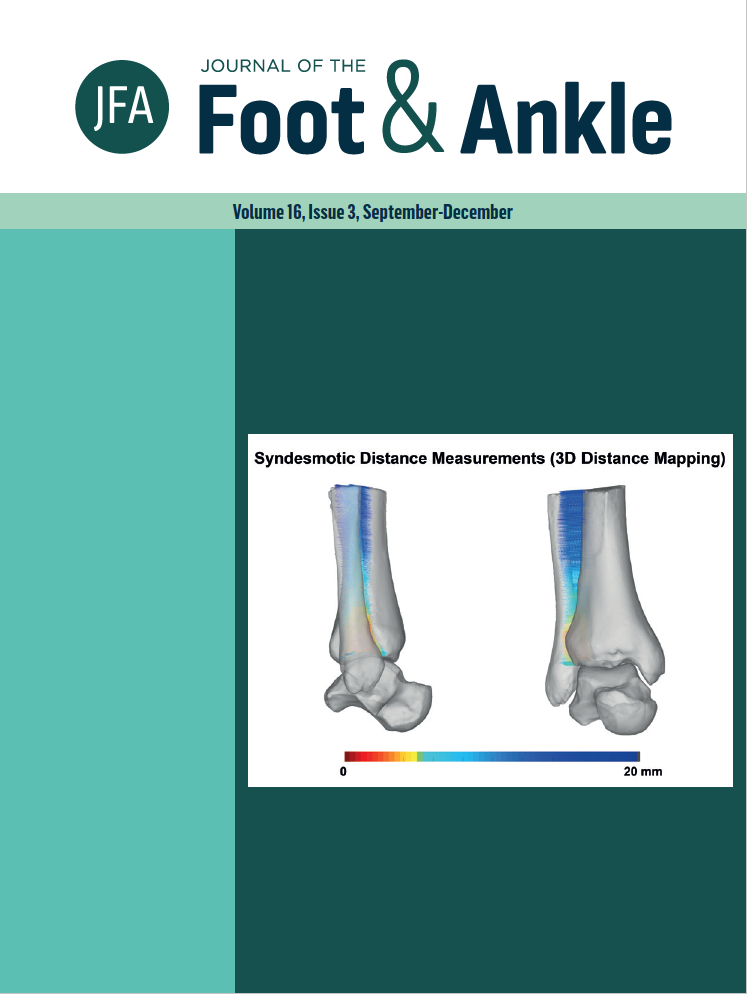Comparative result between adult men and women with ankle fractures surgically treated
DOI:
https://doi.org/10.30795/jfootankle.2022.v16.1656Palavras-chave:
Ankle fractures, Adult, Open fracture reductionResumo
Objective: Compare the results between adult men and women treated with open reduction and internal fixation after unstable ankle fractures. Methods: Prospective study including 86 patients (n=57, men; n=29, women) with unstable ankle fractures surgically treated. A sociodemographic and clinical questionnaire with 48 items was applied. The morphology of ankle fractures was analyzed according to the AO Foundation and Orthopaedic Trauma Association (AO/OTA) classification system. Results: Among the 86 patients, young men predominated all variables researched. The most common injury was motorcycle crashes, followed by soccer accidents (p≤0.001) caused by high-energy trauma (p≤0.05). Other factors are fractures on the right side (p≤0.05), more fractures AO/OTA 44-B2 and C1 (p≤0.05), and malleolus lateral and bimalleolar fractures (p≤0.01). Conclusion: The results indicate that adult men are more likely to suffer ankle fractures requiring surgical treatment than adult women. We suggest that the anatomical reduction of displaced malleolar fractures, especially restoring the fibula length and maintaining reduction until the fracture is healed, appears to be highly favorable for the surgical treatment of unstable ankle fractures. Level of Evidence II; Prognostic Studies; Prospective Study.
Downloads
Publicado
Como Citar
Edição
Seção
Licença
Copyright (c) 2022 Journal of the Foot & Ankle

Este trabalho está licenciado sob uma licença Creative Commons Attribution-NonCommercial 4.0 International License.







